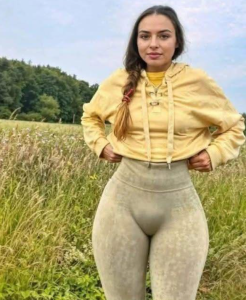🍑 Myth vs. Reality: What Does a Woman’s Big Butt Really Mean?
In the age of viral memes and pop culture obsession with body types, one myth continues to circulate: that a woman’s butt size somehow correlates with the size or shape of her vagina. It’s a provocative idea—but it’s not backed by science. So let’s dive into the anatomy, the misconceptions, and the cultural fascination behind this claim.
🧠 First, Let’s Talk Anatomy
The human body is complex, and every part serves a distinct purpose. The gluteal region—what we commonly call the butt—is made up of muscles (gluteus maximus, medius, and minimus), fat tissue, and skin. Its size and shape are influenced by:
- Genetics
- Hormonal levels (especially estrogen)
- Muscle development
- Fat distribution
The vagina, on the other hand, is an internal muscular canal that connects the cervix to the external genitalia. Its size and elasticity vary from person to person, but it is not anatomically connected to the gluteal muscles or fat tissue in a way that would make butt size a reliable indicator of vaginal size or function.
🧬 Is There Any Biological Link?
No direct anatomical or physiological link exists between the size of a woman’s butt and the size of her vagina. They are separate structures with separate functions. While both are influenced by hormones like estrogen, that’s where the similarity ends.
Some online discussions speculate that women with larger hips and buttocks may have wider pelvic bones, which could theoretically influence childbirth ease—but even that is not a hard rule. Pelvic shape varies widely, and obstetricians rely on imaging and physical exams—not visual assumptions—to assess childbirth readiness.
🧵 Where Did This Myth Come From?
This myth likely stems from a mix of:
- Cultural stereotypes: Certain body types have been sexualized in media, leading to assumptions about sexual performance or anatomy.
- Misunderstood biology: People often conflate external curves with internal structures.
- Male fantasy and projection: In some cases, these ideas are rooted in objectification rather than science.
In forums like Reddit, some users have speculated about correlations between body type and sexual compatibility, but these are anecdotal and often reflect personal bias rather than medical fact.
📚 What Science Actually Says
According to , vaginal size can vary slightly based on age, childbirth history, and arousal—but it is not influenced by butt size. The vagina is highly elastic and designed to accommodate changes, such as during intercourse or childbirth.
Medical professionals emphasize that external body features are poor indicators of internal anatomy. For example, breast size doesn’t determine milk production, and butt size doesn’t determine vaginal depth or tightness.
💬 The Role of Estrogen and Fat Distribution
Estrogen plays a key role in fat distribution, especially during puberty and pregnancy. Women tend to store fat in the hips, thighs, and buttocks, which is why these areas may appear fuller. This distribution is part of the body’s preparation for childbearing, but again—it doesn’t affect vaginal size.
In fact, women with higher estrogen levels may have more pronounced curves, but that doesn’t translate into any specific vaginal characteristics.
🎭 Pop Culture and the “Big Butt” Obsession
From music videos to fashion magazines, the glorification of curvy figures has fueled myths about sexuality and anatomy. Celebrities like Beyoncé, Kim Kardashian, and Nicki Minaj have popularized the “hourglass” figure, often leading to assumptions about their sexual prowess or anatomy.
But these are cultural narratives—not scientific truths. The idea that a big butt equals a “better” or “different” vagina is rooted in fantasy, not fact.
🧠 Psychological Impact of These Myths
These myths can be harmful. They:
- Objectify women
- Create unrealistic expectations
- Fuel body insecurity
- Distort sexual education
Women may feel pressured to conform to certain body standards, believing that their sexual worth is tied to their curves. This can lead to unhealthy behaviors, including extreme dieting, cosmetic surgery, or self-esteem issues.
🧘♀️ Embracing Body Diversity
Every body is unique. Some women have fuller hips and buttocks, others don’t. Some have wider vaginas, others have narrower ones. None of these traits determine worth, desirability, or sexual compatibility.
The healthiest approach is to embrace body diversity and reject myths that reduce anatomy to stereotypes. Sexual satisfaction, intimacy, and confidence come from communication, trust, and self-awareness—not from measurements.
🧭 Final Thoughts: Let’s Keep It Real
So, does a woman’s big butt mean something about her vagina? Scientifically, no. Culturally, it’s a myth that’s been perpetuated by media, misunderstanding, and fantasy. The truth is far more empowering: your body is yours, and its value isn’t defined by shape or size.
Let’s celebrate women for their strength, intelligence, and individuality—not for assumptions based on anatomy.


